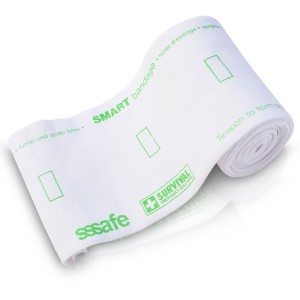Australian Snake Bite Prevention & Treatment On The Trail
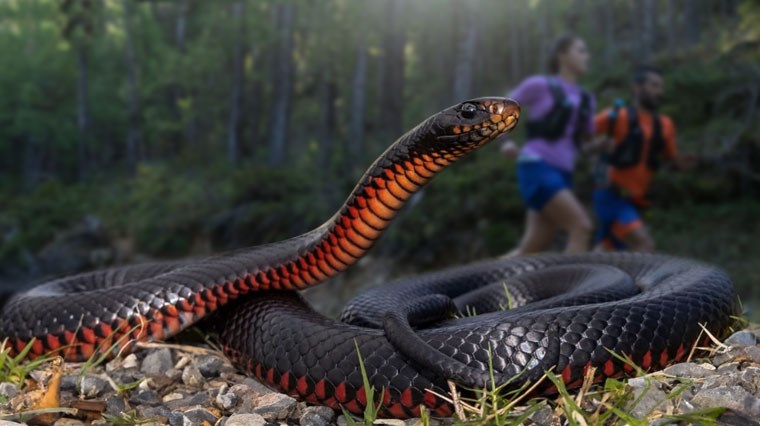
With the weather warming up it’s the perfect time to lace up in your hiking shoes or trail running shoes and take your fitness off-road. However, humans aren’t the only species to enjoy the warm weather, with the sun beckoning out reptiles like lizards, turtles and you guessed it, snakes.
Being cold-blooded (ectotherms), reptiles use the sun to regulate their internal body temperature, speeding up their metabolism and aiding in digestion to allow them to move more energy efficiently.
Fear of snakes is common – but we must remember one of the main reasons for hiking and trail running is literally to step into nature and that means sharing the trails with the Australian wildlife that call the bush their home – snakes included.
We uncover what to do if you encounter or get bitten by a snake so you can be prepared to handle the situation calmly and in the best interests of you, your trail buddy and the Australian wildlife. While taking precautions and maintaining a respectful and safe distance is essential, trading fear for fascination is a good first step to co-exist with nature.
Snakes: Busting Common Misconceptions
Snakes perform a vital role in maintaining a healthy ecosystem of our Australian bush. It is illegal to capture, injure or kill snakes in the wild and like other native Australian wildlife, they are protected under the Wildlife Act 1975.
A snake’s instinct when threatened is to retreat – not attack and by no means do they perceive humans as a food source, with their prey ranging from frogs, birds and lizards to small mammals.
Snakes are naturally shy and inclined to avoid any threats and that includes humans. Being aware of their instinctive behaviours can help us understand why the following course of action, is the best course of action.
What to do if you see a snake on the trail?
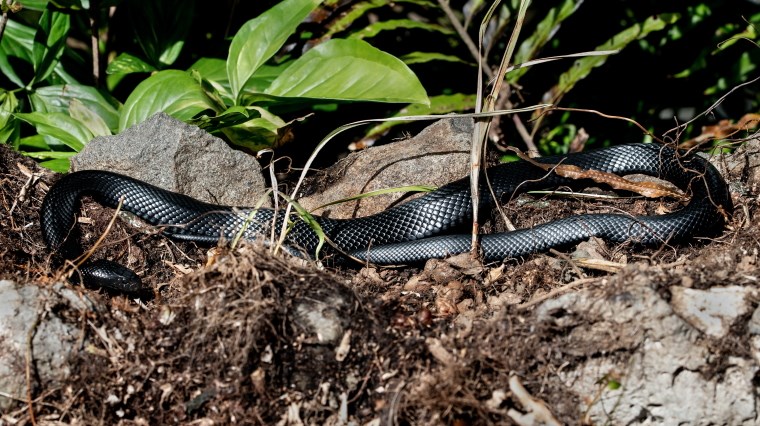
- Be aware, be cautious but don’t let fear cause you to react in a way that may be considered aggressive, threatening or that has the potential to make the snake feel cornered. Stay calm and do not approach it – that means don’t shout out, run or move suddenly, or do anything to provoke it.
- Slowly back away, observing the snake to determine its direction.
- Head in the opposite direction or wait for it to move from a safe distance, with several metres between you and the snake. Once the snake is aware of your presence, it’ll likely slither undercover, leaving the trail free. Alternatively if it is safe to do so you can walk around it, leaving plenty of space between you and the snake.
Precautions and prevention
Unless you are provoking the snake in some way like entering its strike zone by attempting to catch or kill it, it is extremely unlikely you’ll be bitten by a snake. There may be the rare circumstance where you happen to stumble on a basking snake and step on it unaware – which means it pays to be cautious on the trial as snakes are naturally well camouflaged.
Although snake bites are rare in Australia, they are more likely to occur between the months of October and January, when the weather is warmer. However, it’s important to be vigilant on the trail all-year round by taking these precautions.
Wear protective shoes and clothing
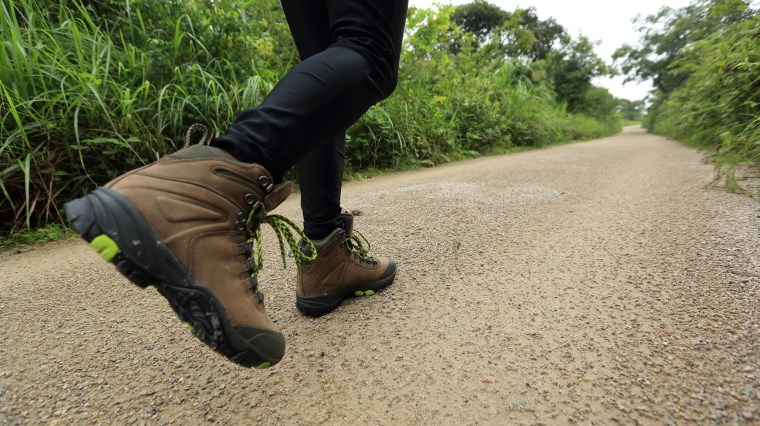
Snake bites to trail runners or hikers usually occur to the lower legs such as the ankles. It’s recommended that you wear lightweight long pants while bushwalking to keep minimal skin exposed and gaiters as an additional protective layer. All of Australia's venemous snakes are elapids or front-fanged snakes. Their fangs are short, making it difficult for them to pierce through clothing to inject venom through the skin.
Needless to say it’s important to wear enclosed footwear so leave the thongs and slides for the beach. Sturdy footwear such as hiking boots not only provide a protective layer but can increase the vibrations your foot strike makes on the ground, giving the snake an opportunity to sense you approaching and to retreat before you encounter it or are even aware of its presence. Using hiking poles in long grass can also encourage a snake to leave before you arrive.
Stay on the trail
Although a snake may find the perfect spot to bask on the trail, they are more likely to be in the long grass or rock crevices where they are even more difficult to spot and have cover from avian predators like kookaburras. Don't stick your hands into anywhere you can't see, like leaf litter or hollow logs that can provide a safe place for a snake to hide or cool down.
Continuously scan the path ahead to stay alert of snakes or other obstacles and be aware that at a quick glance a snake can easily be mistaken for a stick. A regularly maintained trail will make it easier to spot a snake and sticking to the trail will decrease the likelihood of an uninvited encounter.
Not only does leaving the trail have its own risks like increasing the chances of you becoming lost, it also means you are trampling bush, causing physical damage to natural habitats and potentially spreading disease between plant life. Please stay on the trail where possible to respect our national parks and reserves.
Communicate and carry your smartphone
Tell a friend or family member where you are hiking or trail running and how long you expect to be. Even print a map of where you are going and stick it to your car dashboard as an extra precaution.
The fundamentals of trail running safety means you should carry a charged phone with you at all times – even when you are enjoying the benefits of trail running to escape the hustle and bustle of the urban jungle. Trail running with your smartphone hands-free is easy with running waistpacks or running hydration packs to keep your essentials close.
We recommended downloading the Emergency+ app that can quickly put you in contact with life-saving Australian emergency services and provide GPS coordinates to help identify where you are (it requires a phone signal, so it may not be functional in more remote locations).
Trail run or hike with a buddy
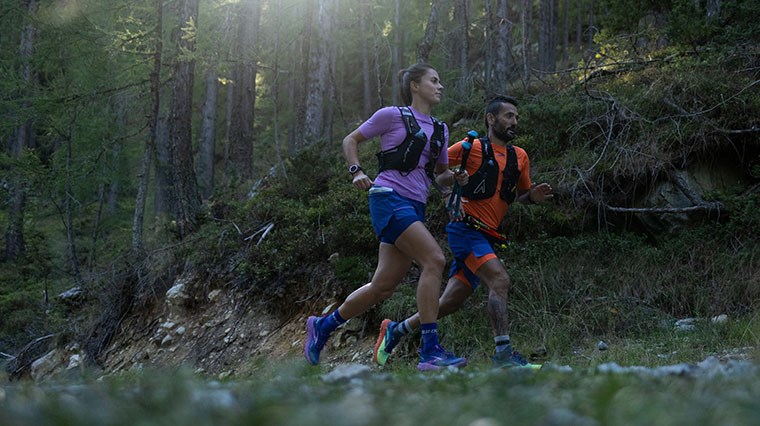
Not only does this mean you’ll have a second pair of eyes and hands in the case of an emergency, but two sets of feet make more noise and vibrations than one. This means you’re less likely to stumble upon a snake by surprise, as they’ll usually retreat long before you encounter them.
Particularly if you’re not an experienced hiker or you’re exploring less popular trails, it’s important to buddy up.
Pack a first aid kit
Your first aid kit should include a pressure immobilisation bandage, among other gear to tend to other injuries like open wounds and sprains. However, carrying a first aid kit isn’t enough. It’s important to take at the minimum a basic first aid course to know how to use the gear effectively and safely.
The SMART Snake Bandage is an essential addition to the first aid kit for trail runners, hikers and campers.
What to do if your trail buddy gets bitten by a snake?
Immediately call emergency services
The puncture points of a snake bite can be near undetectable to the untrained eye unless swelling or bleeding. It can also be challenging to determine whether it’s a dry bite (no venom is released) or a venomous bite by a snake such as a red-bellied black snake (shown in the above images), brown snake or tiger snake. It’s also important to note that a juvenile snake from these venomous Australian species can be just as lethal as the bite of an adult if not treated.
Assume any bite is venomous and life-threatening and take action by immediately calling emergency services (000) for an ambulance. Unless you are a herpetologist (reptile and amphibian specialist), it can be difficult to identify species of snake and whether it’s venomous, and it’s important to not wait for symptoms of poisoning before seeking medical assistance.
Symptoms of a venomous bite may include headache, muscle fatigue, blurred vision, vomiting and nausea, bleeding or swelling from the puncture point and a burning, tingling or stinging sensation - but do not wait. The longer the time the bite is left unattended, the greater the risk.
Keep the snake bite victim calm and immobilised
Keeping the victim still can literally save their life, so lie them down in a stationary position. Allowing the patient to lie down may also help minimise the body’s response to shock. As long as the snake has retreated and there is no further danger, this can be done at the place the bite occurred to minimise unnecessary movement and to take immediate action. Do not move the patient unless they are at immediate risk.
Unlike common belief that venom travels through the bloodstream after a bite, it moves through the lymphatic system – a part of your circulatory system involved in your body’s immune response and a passageway for infection-fighting white blood cells (lymphocytes).
Lymph or lymphatic fluid moves when you do – so walking and running will increase the spread of venom up the body, as will an increased heart rate so reassure the patient to keep them calm.
Apply a pressure immobilisation bandage
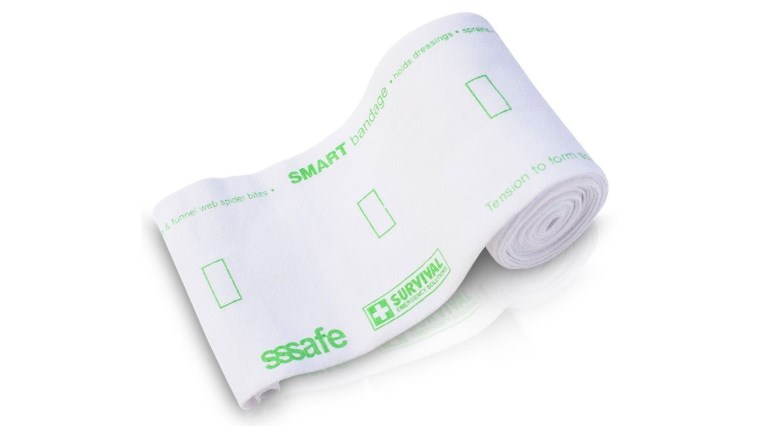
Most bites occur to the limbs such as arm or leg and it’s critical to restrict the spread of venom through the lymphatic system. It’s recommended that you to carry a pressure immobilisation bandage when bush walking and trail running in Australia and to keep one in the first aid kit of your home, as many snake bites occur in the victim’s own backyard.
Using a 10 – 15cm pressure immobilisation bandage such as the SMART Snake Bandage pictured above:
- Wrap the limb at the bite site. It should be tight against the skin so it’s difficult to slide a finger beneath the pressure immobilisation bandage. The SMART Snake Bandage features a tension indicator which turns from rectangle to square when proper tension has been achieved.
- Apply a second elasticised roller bandage beginning slightly above the toes or fingers of the bitten arm or leg and wrap it firmly up the entire length of the limb in a spiral motion. Keeping the toe or finger tips exposed allows you to keep track of the snake bite victim’s circulation. If an elasticised roller bandage isn’t on hand, use any stretchy fabric available such as tights or torn t-shirts.
- Immobilise the limb to prevent movement using a splint. A sturdy stick can function as a make-shift splint by tying it securely to the limb with bandages or any fabric. Alternatively a sling can be used to support a bitten arm.
- Record the time of bite and mark the bite site with a pen. If nothing else is available, the bite site can be marked with mud or dirt on the bandage to easily identify its location.
- Keep the patient immobile, calm and reassure them that help is coming until the ambulance arrives and medical experts can take over.
The DON'Ts of snake bite treatment
- DON’T wash the wound or clothing - Excess traces of venom can be used by medical expects to identify the anti-venom required to treat the patient. If no venom is available, the generic polyvalent anti-venom may be used for treatment so don’t attempt to kill or catch the snake for identification purposes. It may help to remember the colouration of the snake or take a photo, but not if it interferes with treating the patient or your safety.
- DON’T use a tourniquet - A tourniquet can inhibit blood flow to the point where it can cause permanent damage to the limb.
- DON’T allow the bite victim to smoke, consume caffeinated drinks or alcohol, even for pain relief – Smoking and caffeine can cause heart rate to increase, and alcohol can have a blood-thinning effect.
- DON’T try to suck out or drain the venom by cutting the skin – This is dangerous and not effective.
- DON'T attempt to treat the swelling with ice – This is not effective.
Please note: Although survival advice from reliable resources can be informative, there is no substitute for hands-on experience in a face-to-face first aid training course. In the case of an emergency in Australia always seek immediate professional medical assistance by calling Triple Zero (000).
Stay safe and happy trail running!

